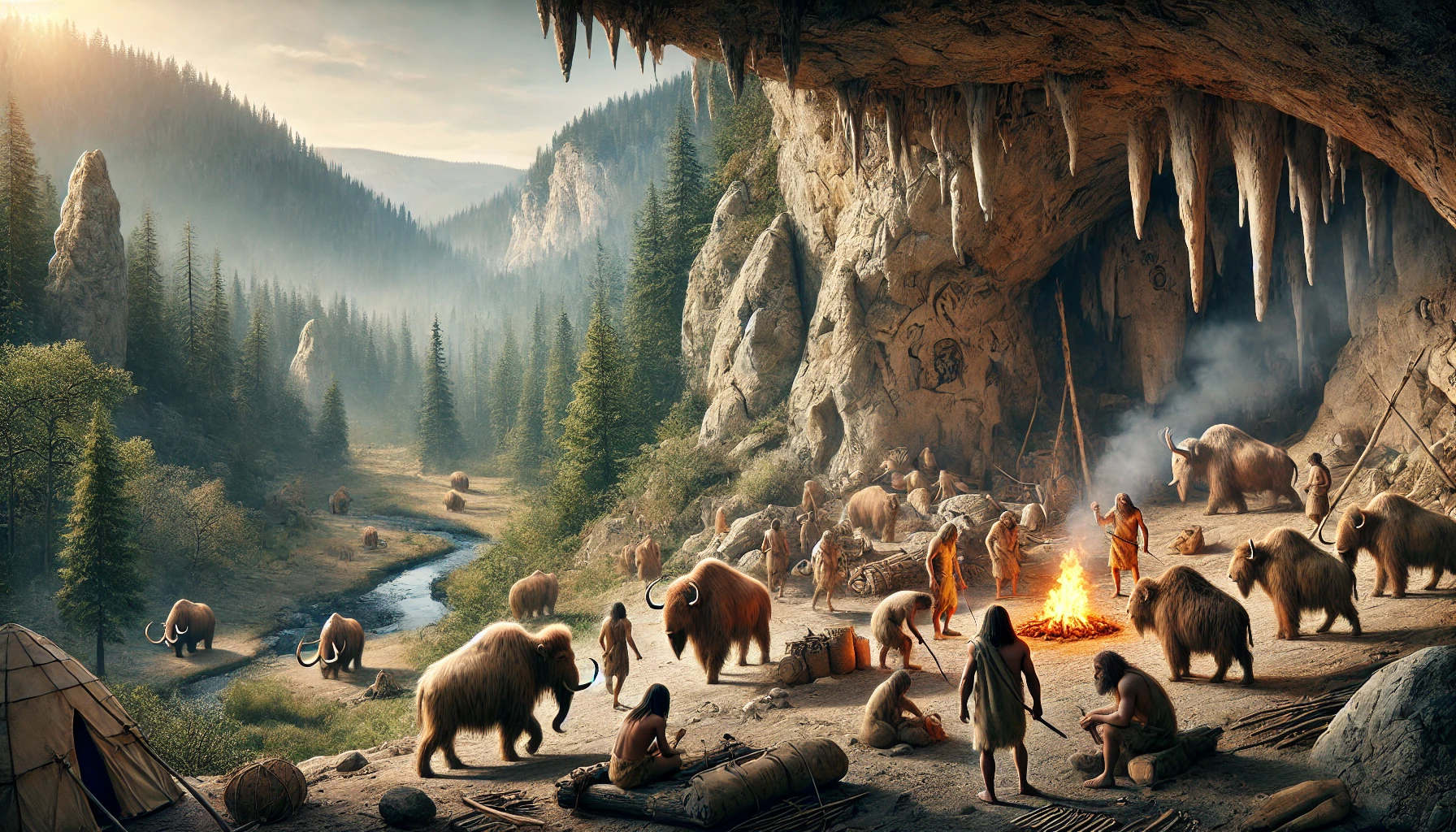Discover if you match this ancient people in our Shared Root Matches: Ancient America
Overview
Lovelock Cave, located in the Humboldt Sink in Nevada, USA, is one of the most significant archaeological sites for understanding the prehistoric cultures of the Great Basin region. The cave, also known as Horseshoe Cave, provides a wealth of artifacts and evidence of human occupation during the period from 26 to 207 CE.
Early human dispersals within the Americas
https://www.science.org/doi/10.1126/science.aav2621
Archaeological Context
Lovelock Cave offers a unique glimpse into the life of prehistoric peoples in the arid environment of the Great Basin. The site was first excavated in the early 20th century and has since provided crucial information about the people who lived there.
1. Inhabitants and Culture:
- Western Basin Tradition: The inhabitants of Lovelock Cave are generally associated with the Western Basin Tradition, a cultural adaptation to the desert environment of the Great Basin.
- Lifestyle: The people living in this region were primarily hunter-gatherers, relying on the diverse resources provided by the lake and marsh environments of the Humboldt Sink.
2. Economic Activities:
- Hunting and Gathering: The primary subsistence strategies included hunting waterfowl, small mammals, and fishing. Gathering plant resources, such as seeds and roots, also played a significant role in their diet.
- Tool Technology: The inhabitants used a variety of stone tools, including projectile points, scrapers, and knives. They also crafted tools from bone and wood, reflecting a broad knowledge of available materials.
3. Archaeological Findings:
- Artifacts: Excavations at Lovelock Cave have uncovered a diverse array of artifacts, including tule mats, duck decoys, and baskets, which are particularly well-preserved due to the cave’s dry conditions.
- Duck Decoys: One of the most notable discoveries is the collection of elaborate duck decoys made from tule reeds, some of which are considered the oldest known examples of their kind. These decoys illustrate the sophisticated hunting techniques of the inhabitants.
Cultural and Social Structure
1. Social Organization:
- Small Groups: The inhabitants of Lovelock Cave likely lived in small, mobile groups that moved seasonally to exploit different resources.
- Community Life: The artifacts suggest a community that worked cooperatively in hunting, gathering, and crafting, with shared knowledge and skills passed down through generations.
2. Burial Practices:
- Interment: Limited evidence of burial practices has been found in the cave, but other sites in the region indicate that burials often included grave goods, reflecting the social status and beliefs about the afterlife.
Environmental and Geographic Context
1. Climate and Resources:
- Arid Environment: Lovelock Cave is situated in a harsh, arid environment, where water and food resources were concentrated around lakes and marshes, particularly during wetter climatic periods.
- Humboldt Sink: The Humboldt Sink provided a critical habitat for birds and fish, which were essential to the subsistence strategies of the cave’s inhabitants.
2. Adaptation Strategies:
- Water Management: The inhabitants developed techniques to manage and utilize the scarce water resources effectively, as evidenced by the storage of waterfowl and fish.
- Seasonal Mobility: The people likely practiced seasonal mobility, moving to different locations throughout the year to access various resources.
Significance of Lovelock Cave
1. Preservation of Artifacts:
- Dry Conditions: The dry conditions inside Lovelock Cave have led to exceptional preservation of organic materials, providing a rare and valuable glimpse into the material culture of its inhabitants.
- Tule Artifacts: The preservation of tule artifacts, such as mats and decoys, is particularly significant, offering insights into the daily and ritualistic aspects of life.
2. Archaeological Research:
- Early Excavations: The early 20th-century excavations by Llewellyn L. Loud and M.R. Harrington brought significant attention to the site, leading to subsequent studies that have expanded our understanding of the Great Basin’s prehistoric cultures.
- Continued Research: Ongoing research continues to uncover new information, refining our understanding of the chronology, environmental adaptation, and cultural practices of the Lovelock Cave inhabitants.
Conclusion
Lovelock Cave in Nevada, USA, is a critical archaeological site for understanding the prehistoric cultures of the Great Basin region during the period from 26 to 207 CE. The artifacts and evidence of human occupation found in the cave provide valuable insights into the subsistence strategies, social organization, and cultural practices of the people who lived there.
The exceptional preservation of organic materials, such as tule duck decoys and mats, highlights the ingenuity and adaptability of the cave’s inhabitants to their arid environment. Lovelock Cave remains a vital resource for archaeologists and historians, contributing to the broader narrative of human adaptation and survival in North America’s diverse landscapes.





